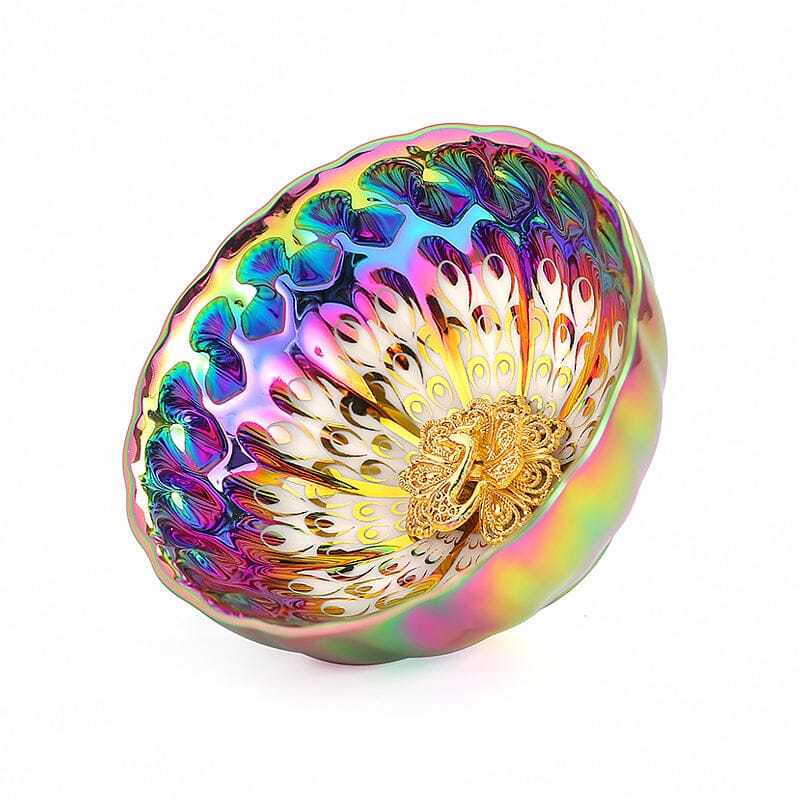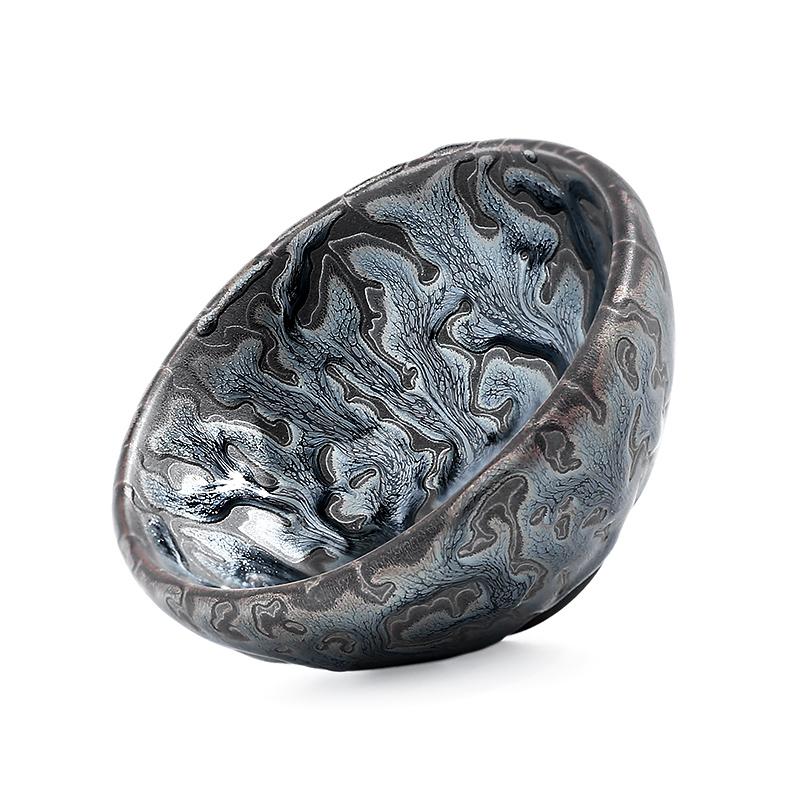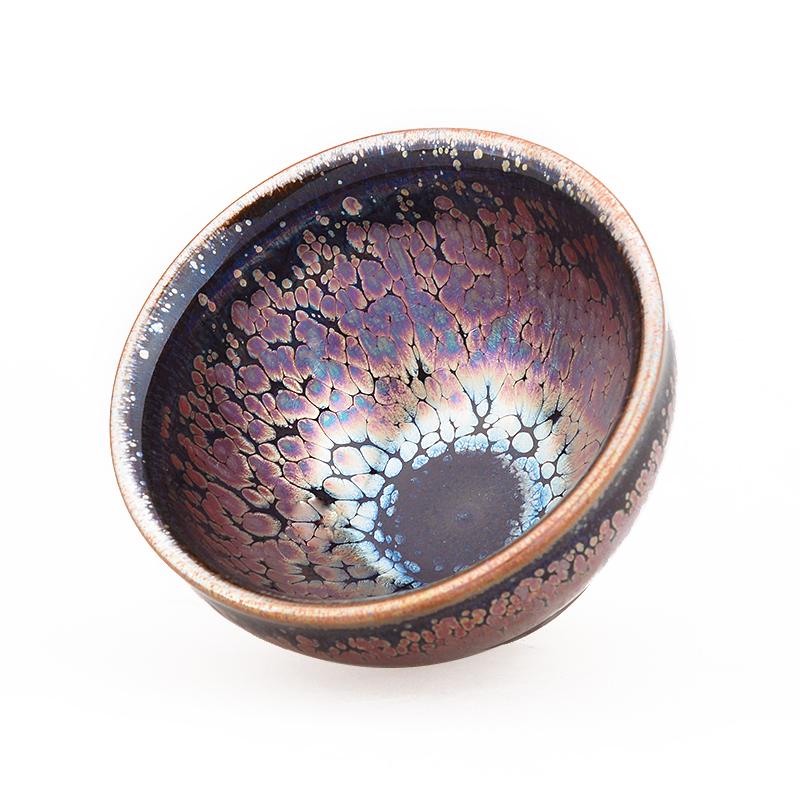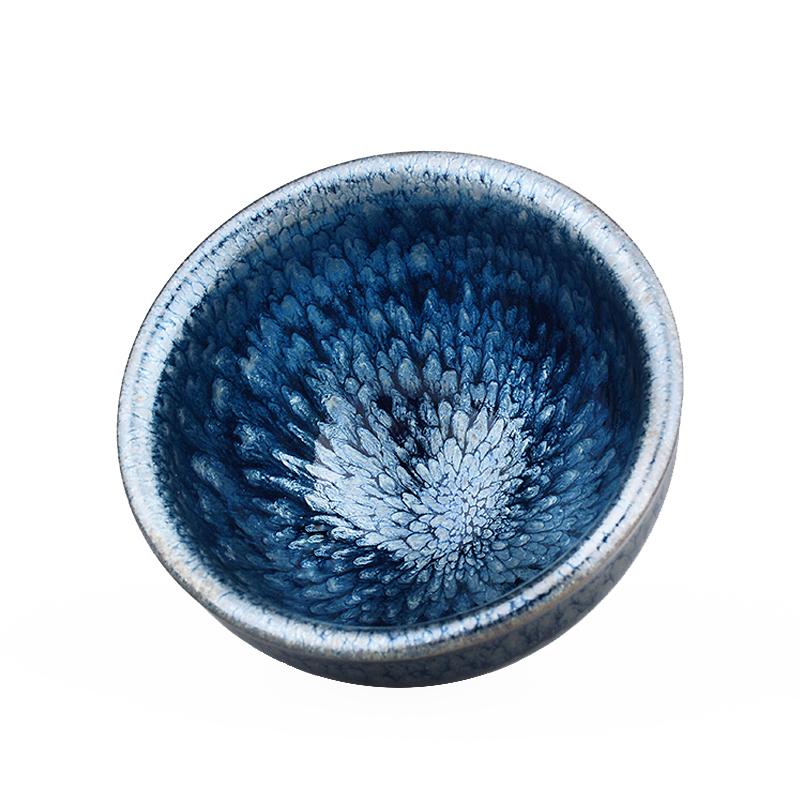Tieguanyin, a classic variety among oolong teas, is beloved by tea enthusiasts for its unique hemispherical appearance, rich orchid fragrance, and mellow taste. To fully showcase Tieguanyin's charm, it is essential to master every detail from warming cups and awakening tea to water injection and soup serving, and to understand the tea philosophy of "treating tea gently". This article will systematically explain Tieguanyin's brewing process, key techniques, and tasting etiquette, helping you get started with the brewing essence of this semi-fermented tea.
1. Basic Cognition of Tieguanyin: Variety Characteristics and Dry Tea Features
Appearance features: Dry Tieguanyin tea presents a hemispherical compact shape, a typical characteristic formed by the rolling process. Under force, tea leaves curl into balls, which not only facilitate aroma storage but also gradually unfold to release internal substances during brewing;
Fermentation characteristics: As a semi-fermented tea (fermentation degree about 15%-25%), it combines the fragrance of green tea and the mellowness of black tea. During fermentation, some tea polyphenols are converted into sweet substances, making the tea soup neither as astringent as green tea nor as strong as black tea, presenting a balanced "clear, sweet, mellow and harmonious" taste;
Easily confused points: It is necessary to distinguish Tieguanyin's fermentation degree from other teas—green tea is non-fermented (clear soup with green leaves), black tea is fully fermented (red soup with red leaves), while Tieguanyin's semi-fermented characteristic gives it a golden or amber soup color with "green belly and red edges" in the leaf bottom.
Variety advantage: The Tieguanyin variety inherently has an orchid fragrance gene, and high-quality fresh leaves themselves have a fresh floral aroma;
Craft Blessing: Aromatic substances produced during semi-fermentation merge with caramel notes from roasting, creating a lasting "fragrance remaining after seven infusions";
Brewing key: The hemispherical structure needs to be gradually "awakened" through standardized brewing. Improper operation may lead to insufficient aroma release or bitter taste.

2. Preparations Before Brewing: Key Roles of Utensils and Cup Warming
Purple clay pot: Good air permeability, can absorb odors, gather aroma, and has moderate heat preservation, suitable for long-time brewing;
Gaiwan: Glass or white porcelain materials facilitate observing soup color and tea unfolding, and have no adsorptivity, allowing the true tea aroma to be presented;
Capacity recommendation: A 100-120ml utensil with 5-7 grams of dry tea (about 1/5 of the utensil's capacity). Imbalanced proportions may lead to inappropriate strength.
Core purpose: Raise and stabilize the utensil temperature—cold pots and cups will quickly absorb heat from hot water, causing uneven heating of tea leaves and difficulty in aroma release;
Key details:
Rinse the inside and outside of the pot and tasting cups evenly with boiling water, ensuring every corner is soaked;
Pouring hot water over the outer pot body can further maintain temperature stability and avoid rapid heat dissipation;
After warming, residual water must be completely poured out to prevent diluting the subsequent tea concentration;
Common misunderstanding: Cup warming should not be regarded only as a "cleaning step"; its role in temperature regulation is far more important than its hygienic significance.
3. Core Brewing Steps: Precise Control from Tea Awakening to Soup Serving
Tea adding points: Use a tea spoon to gently transfer dry tea into the pot or gaiwan, avoiding direct hand contact—grease or odors on hands may contaminate the tea and affect aroma purity;
Quantity control: Put tea according to the standard of "5 grams of dry tea/100ml utensil". Beginners can use an electronic scale for precise control, avoiding excessive tea (bitterness) or insufficient tea (blandness) based on feeling.
Concept clarification: It should be called "awakening tea" rather than "washing tea"—the essence of awakening tea is to "awaken sleeping tea leaves", just like awakening a sleeping person, not questioning tea hygiene;
Operation standards:
Pour boiling water just enough to cover the tea leaves (the amount of water is based on covering all dry tea);
Immediately pour out the tea soup (about 3 seconds, do not steep for a long time), this soup is not for drinking;
Scientific principle: After absorbing water, the cell walls of dry tea expand rapidly, preparing for the uniform precipitation of substances such as tea polyphenols and amino acids during subsequent brewing, while initially activating tea aroma.
Water injection skills:
Pour water slowly along the pot wall or gaiwan edge, avoiding direct flushing of tea leaves—violent impact will cause tea leaves to break, bitter substances to precipitate in advance, and easily make the tea soup turbid;
Recommended "circular water injection method": Pour water in a circle along the inner wall of the utensil to ensure hot water evenly infiltrates every tea leaf, promoting balanced flavor release;
Taboo: Reject the intense technique of "high pouring and low serving". The impact from high pouring will "irritate the tea nature" and destroy the softness of the tea soup.
Temperature control:
Ideal water temperature: Use hot water "between the first and second boils" (about 95-98℃)—at this time, bubbles in the water are like "fish eyes" or "beads", and the water quality is fresh;
Taboo: Do not use over-boiled "third boil water" (with large rolling and a lot of foam). Such water becomes "overcooked" with reduced oxygen content, making the tea soup taste stiff and aroma dull.
Key actions:
Use a strainer to filter tea residues to ensure clear tea soup;
Pour slowly with the pot spout close to the fairness cup to avoid oxidation or aroma loss caused by high drop;
Time control:
First infusion: Serve soup after 10-15 seconds (tea leaves have initially unfolded after awakening, no need for too long);
Second infusion: 20% shorter than the first infusion (about 8-12 seconds)—since tea leaves have fully unfolded, substances release faster, and shortening time can avoid strong astringency;
Common misunderstanding: Do not follow the rigid rule of "increasing time with each infusion". The best soup serving time for Tieguanyin needs to be flexibly adjusted according to soup concentration.

4. Tasting Etiquette: Ritual from Color Observation to Cup Holding
Observe color: Pour the tea soup into a fairness cup or white porcelain cup and observe its color—high-quality Tieguanyin has a golden and transparent soup color with an amber aperture on the edge, no turbidity or precipitation;
Smell aroma: Pick up the cup and gently shake to fully release the aroma, and carefully smell the orchid, honey, or caramel notes (different craftsmanships of Tieguanyin have different aroma focuses). High-quality tea aroma should be fresh, lasting, and free of off-odors;
Taste flavor: Savor in three sips, following the rhythm of "drink→sip→taste":
First sip "drink": Take a light sip to feel the smoothness of the tea soup;
Second sip "sip": Let the tea soup stay in the mouth for 2-3 seconds, touching the tip of the tongue (sweet), tongue surface (mellow), and bottom of the tongue (aftertaste);
Third sip "taste": Swallow slowly to experience the lingering rhyme and aroma retention in the throat.
Technique standard: Adopt the "three dragons protecting the tripod" cup-holding style—thumb and index finger gently pinch the cup edge, middle finger supports the cup bottom, and the three fingers work together stably and elegantly;
Detail points: The jaws of death faces oneself, and the little finger naturally slightly tilts (not deliberately raised), avoiding fingers blocking the view or touching the inner side of the cup edge;
Core significance: Etiquette is not just a form, but also calms the body and mind through stable movements, allowing better focus on the tea soup experience.

5. Brewing Philosophy and Taboos: Core Principle of Treating Tea Gently
When brewing tea, one should have a sense of reverence, regard tea leaves as living organisms with spirituality, and "communicate" with them through gentle actions and stable rhythms;
Every link should reflect "gentle treatment": slow water injection, steady soup serving, and light utensil holding, allowing tea leaves to naturally release flavor in a peaceful environment.
(2) Operation Taboos
Avoid violently hitting tea leaves or utensils; violent vibrations will damage tea structure and tea soup stability;
Avoid fast and rough water injection; impact will cause aroma loss and precipitation of bitter substances;
Avoid using third boil "overcooked water"; water that has been boiled for too long will make the tea soup lose freshness;
Avoid noisy environments and impatient minds; external interference will be transmitted to the tea soup through actions, affecting flavor harmony.
6. Knowledge Summary: Key Points of Tieguanyin Brewing
The way of brewing Tieguanyin combines "technology and mentality". From awakening the hemispherical dry tea, to the patience of gentle water injection, to the focus during tasting, every detail interprets the tea philosophy of "harmony". When you watch tea leaves slowly unfold in hot water, smell the orchid fragrance pervade, and feel the tea soup from mellow entrance to long lingering rhyme, you will understand: the best brewing is to let tea show its flavor in the most natural way, and the brewer only needs to be a witness and guide of this flavor release with respect and focus.









Share:
Brewing Oolong Tea – Da Hong Pao: A Tasting Guide from Technique to Culture
Brewing Oolong Tea – Tieguanyin (Part II): Advanced Techniques and Durability Control